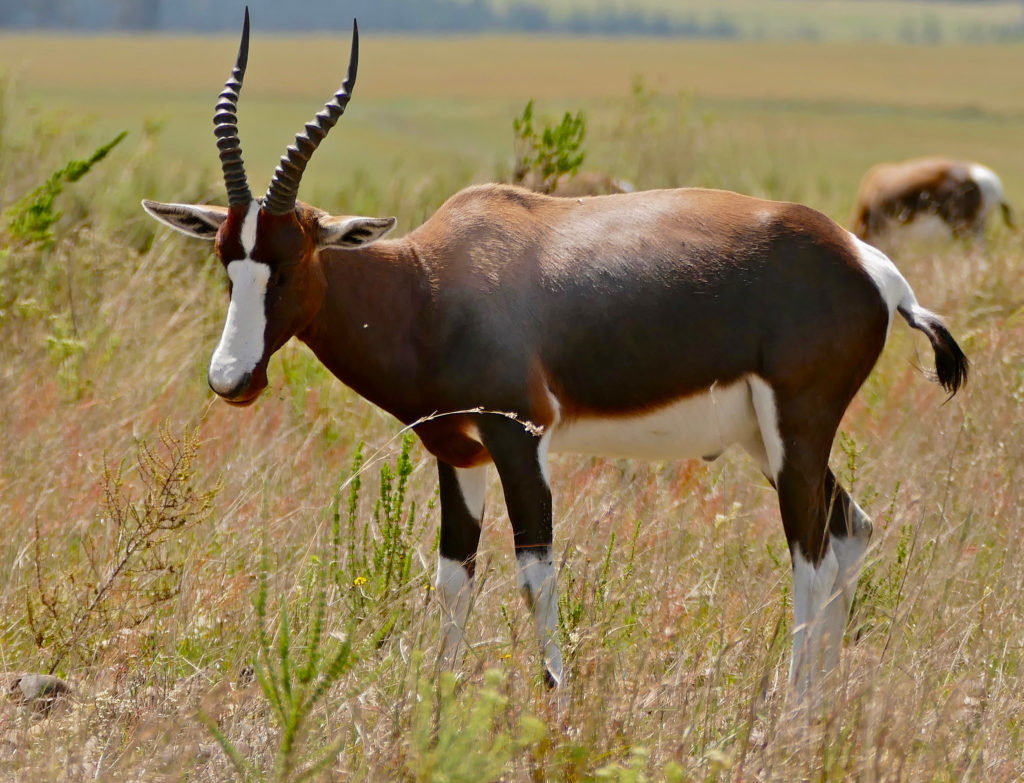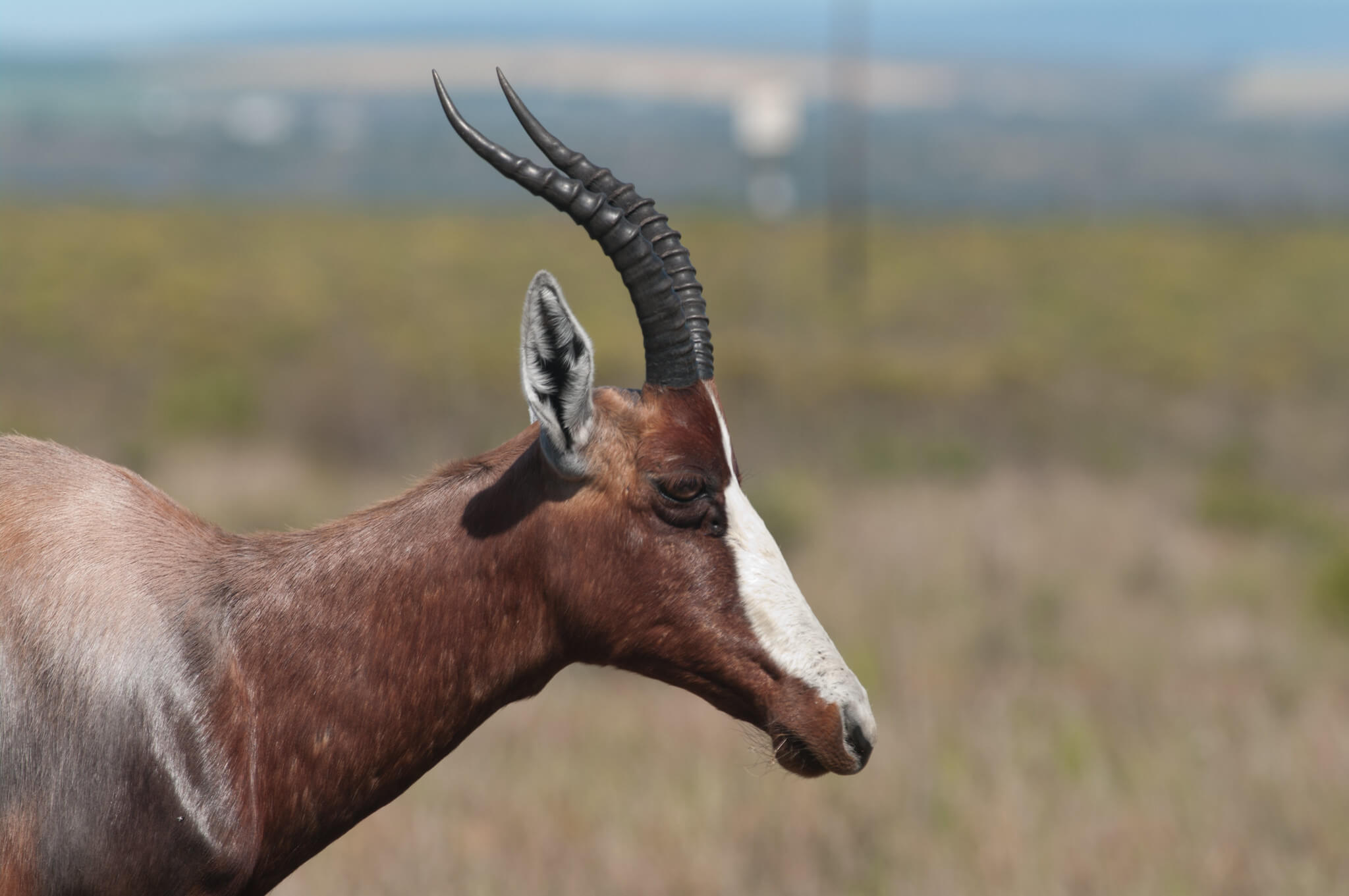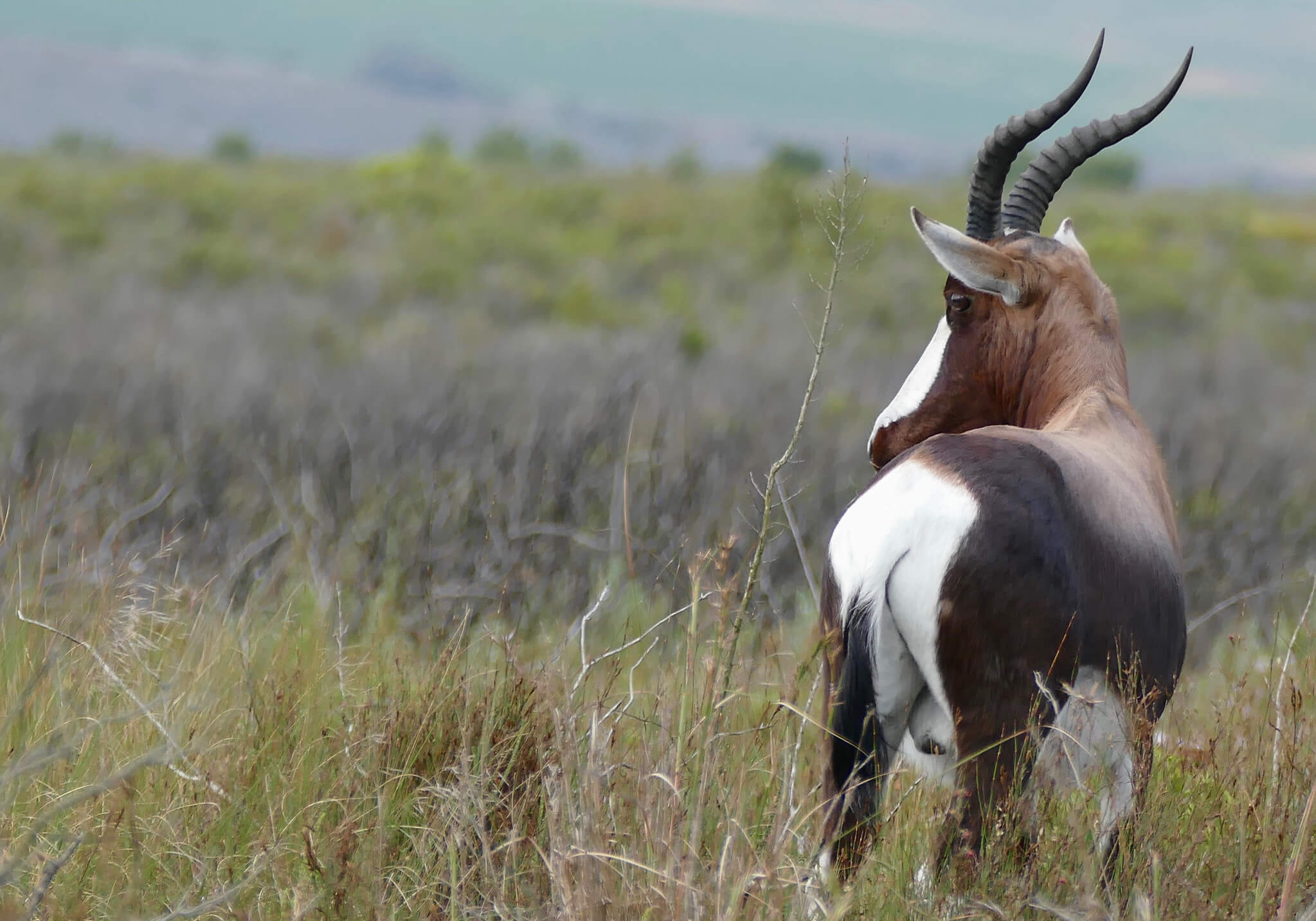Fun Facts About Bontebok
If you’ve had the pleasure of visiting Melozhori Private Game Reserve, you most likely came across a herd or two of bontebok going about their daily grazing. One of the rarest antelope in South Africa, they are a little-known but very much-loved animal around this part of the country. For those unfamiliar with them, we’ve put together a few interesting facts about Bontebok.

- Bontebok can survive without water for several days; however, if water is available, they’ll drink at least once a day.
- They belong to the Damaliscus pygargus species of which there are two subspecies, Bontebok (Damaliscus pygargus pygargus) and Blesbok (Damaliscus pygargus phillipsi).
- They are known for the distinctive white blaze that runs down the center of their face.
- They were once considered to be the rarest antelope in the world, brough to the brink of extinction by hunters in the 18th century. By 1830 as little as 17 remained.
- Unlike other antelope such as springbok, kudus and impala, Bontebok are terrible jumpers. In fact, when Dutch farmer Alexander van der Bijl built a fence to enclose the remaining 17 bontebok on his farm, their lack of athletic ability saved the entire species! The bontebok didn’t escape, and were soon transferred to a national park where their population slowly grew. It is worth pointing out that they are, however, pretty good at crawling under things.
- Bontebok National Park was established in 1931 specifically to conserve these lovely antelope, and now their numbers are stable.

- Bontebok mate between January and March, and their calves are born between September and October. Calves are mobile within minutes of birth and tan in colour, which assists them in blending into the landscape, providing much-needed camouflage from predators while at their most vulnerable.
- Bontebok can live for up to 17 years in the wild.
- Their lyre-shaped horns are found in both sexes – a regular occurence when it comes to antelope – and can reach 50cm in length.
- Bontebok communicate with grunts and snorts. They have scent glands on their back feet and just below their eyes for territory marking and create dung middens to state their claim on an area of land.

Have you been lucky enough to spot a Bontebok in their natural habitat? If not, why not book a trip to Melozhori Private Game Reserve, situated just 2 hours from Cape Town. When staying at our all-inclusive Lodge, daily game drives are complimentary, while guests booking The Eco-Pods or The Cottage benefit from one complimentary game drive per 2-night stay. What are you waiting for? Email info@melozhori.co.za or book online today!
Image Credits (in order):
Melozhori Private Game Reserve
Flickr | Bernard DUPONT
Flickr | Chris Hills
Flickr | Pierre Boulet
Flickr | Will George
Flickr | Bernard DUPONT